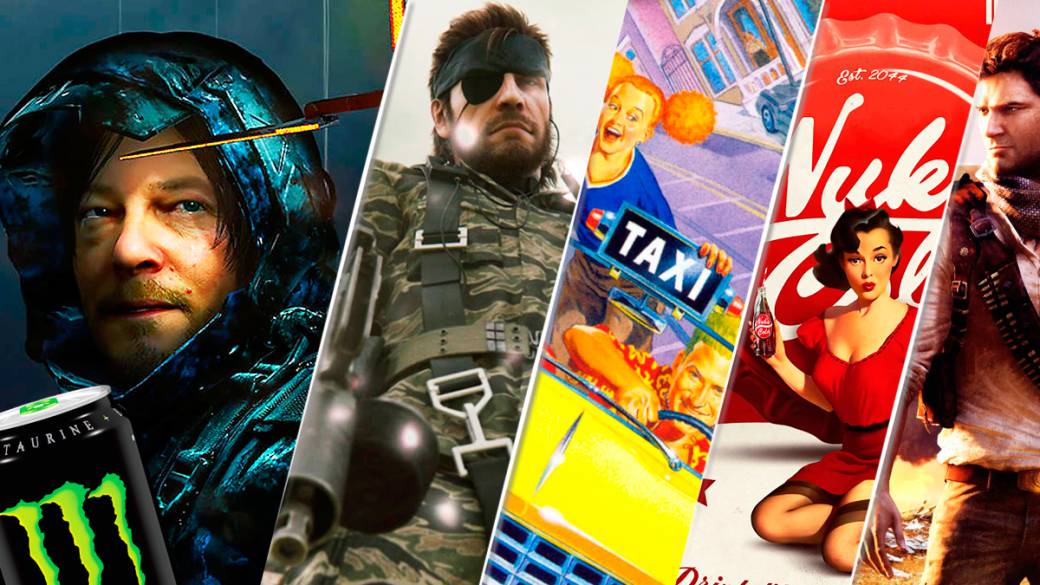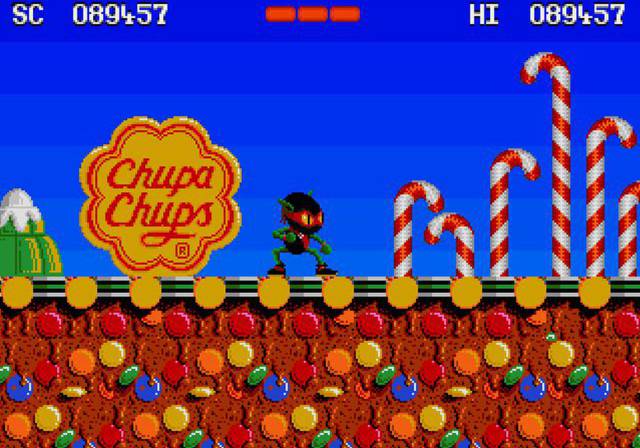
Monster in Death Stranding is not, by far, the first case of advertising camouflaged in the video game. We review this phenomenon.
Product placement is a marketing technique with which a product or brand is inserted into the narrative of a program, movie or television series. A resource that began to proliferate in the eighties, and that has been spreading and molded to various media. Among, those of course, are video games.
Thus, the public receives the advertising content organically in the middle of a scene. It can be by means of a sign or even with the character consuming the product. A way to bring a daily touch to the work in question, getting the viewer to empathize to a greater extent by being familiar with the product.

Fusion with the work, double impact
Marketing experts, such as Philip Kotler or Gary Armstrong, say that, to make their way into a society where there is information saturation, marketers opt for new options when it comes to advertising products, combining advertising and entertainment. This results in the placement by product within audiovisual entertainment works being an increasingly recurring fact.
Of course, nothing that appears on the screen is by chance. Everything is part of a bidirectional agreement. The advertising brand is interested in appearing in a renowned production. And this extra financing is good for the work itself, through publicity that not only is not aggressive for the viewer, but also helps to keep their scenes in the retina. According to a ScienceDirect report, consumers better remember the presence of brands they know about unknown to them.

A well-known example of advertising by location is the presence of the Wilson football, which ends up becoming a secondary character in the film itself. The protagonist himself, masterfully interpreted by Tom Hanks, baptizes her with the name of the product; naming her constantly and turning her omniscient presence into covert advertising. There are even films that take this marketing maneuver to the title, such as the iconic Breakfast at Tiffany’s.
In the middle of interactive entertainment, production costs are increasingly high. Therefore, during creative processes the ingenuity is sharpened to try to include the product placement in the most subtle way possible. That is not a blatant advertising. Although it is not always easy.
Hideo Kojima, a master of this strategy

Video games, despite their pubescence, have been including this type of marketing for several years. In recent weeks there has been much talk about the Monster Energy cans that appear in Death Stranding, but it is not the first adventure that includes references to real brands.
In fact, Hideo Kojima himself is one of the creatives who has most often included this type of covert advertising organically in his games. In Metal Gear Solid: Peace Walker, the delivery of the saga originally appeared for PSP, did not go with a look, and during the adventure we found winks to Doritos, AXE, Pepsi or Mountain Dew. And it is an example of how not to carry out these maneuvers, since it was an adventure based on the year 1974. And the vast majority of brands mentioned did not exist at that time.
There are many titles in the Metal Gear saga that follow this advertising line, with more success. FHM magazine in Metal Gear Solid 2 (which we could also use as a distracting element to avoid enemies while entertaining in its pages). Calorie Mate energy bars in MGS3 or the iPod in MGS4 are other more accurate examples. Even at PSX Metal Gear Solid we found a console in Otacon's office,

Another repeat study in this marketing is Remedy. They introduced publicity of the Verizon telephone company in Alan Wake, helping the protagonist to have coverage both in this world and in the other. The Finnish study also repeated strategy with Quantum Break, taking advantage of its alliance with Microsoft to show us Laptops of the Surface range or mobile devices with the Windows operating system.
But this product placement, although growing, is not a phenomenon that has emerged in recent years.
A technique with a past
Classic games, such as Ninja Turtles, already included this type of sponsored content in their development. In addition, fitting perfectly with the context, since we saw advertising Pizza Hut, paying tribute to the turtle's favorite food. This fast food establishment also made an appearance in another mythical like Crazy Taxi, where some passengers asked us to go to fill their stomachs. In the SEGA game we could also glimpse other brands, such as KFC, Levis or Fila while we were driving at full speed.
One of the first games that included this ploy is Zool: The Ninja of Nth Dimension, a platform launched in full hatching of the genre then, whose only notable aspect was the presence of the advertising of Chupa-Chups, one of the best Spanish inventions of the history. Another prime case is that of Pole Position, a 1982 driving game, in which we could see Marlboro posters. Something unthinkable at this point due to the restrictions in place to advertise tobacco.
In the 1990s, complete games were also released that were ode to the product placement, and that were directly based on products. It is the case of Pepsiman, where you had to collect cans of Pepsi while we did not stop running around the neighborhood dodging obstacles; or Cool Spot, another platform platform adventure in which we took control of a sheet that had to advance through scenarios full of dangers … and 7Up bottles.

Over the years we have encountered many more examples. In the Pikmin saga appeared both batteries of the Duracell brand, as peanut butter of the Skippy brand. In the game Enter the Matrix there were vending machines sponsored by Powerade to not need pills of any color.
We have seen different cases of advertising placement, due to collaborations. An example of this is an advertising spot created on the occasion of the launch of Uncharted 3, where Nathan Drake was the protagonist of the Subway commercial, a fast food establishment.
We also found opposite cases. What is called as inverse product placement. Fictitious video game products that have subsequently been marketed in reality for business purposes; either for merchandising purposes only or to take advantage of its media pull. There are many examples, among which the iconic Nuka-Cola of the Fallout saga or the Fortnite loot boxes stand out.
Surely the relationship between advertising and video games continues to be shaped in the future, and offering new ways to show users.

